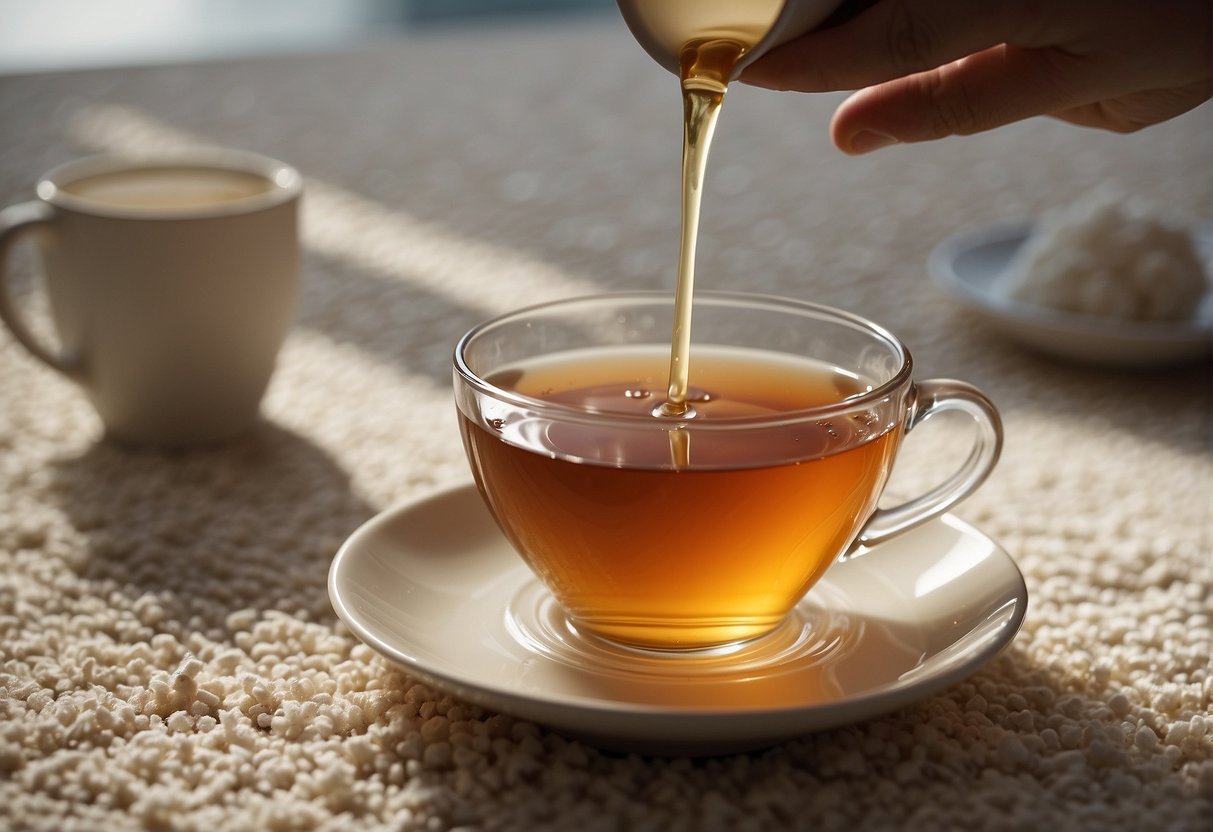Carpets add warmth and comfort to our homes, but they are also magnets for spills and stains, with tea stains being a common culprit. The rich hues of tea can leave unsightly marks on your once-pristine flooring, making it seem like the damage is permanent. However, fear not! With the right techniques and a bit of patience, you can effectively remove tea stains and restore your carpet’s beauty. This comprehensive guide will equip you with practical tips and step-by-step instructions to tackle those stubborn stains.
Understanding Tea Stains: The Basics
Tea stains are particularly challenging due to the tannins present in tea leaves. Tannins are natural compounds that give tea its color and can bind to carpet fibers, making stains difficult to remove once they set. Prompt action is key; the sooner you address the stain, the better the chances of complete removal.

Pre-Treatment Assessment: Identify & Plan
Before diving into cleaning, assess the type of carpet you have and the fiber composition. Knowing whether your carpet is made of synthetic materials like nylon or polyester, or natural fibers such as wool, will guide your choice of cleaning solutions. Delicate carpets may require gentler treatment methods.
Tools & Solutions
Gather the following items before starting:
- White cloths or paper towels
- Lukewarm water
- Mild detergent (preferably one designed for carpets)
- White vinegar
- Baking soda
- A soft-bristled brush or an old toothbrush
- Carpet cleaner (if needed)
Immediate Action: Blotting Away Excess Liquid
1. Quick Response
Reacting quickly is crucial. Blot the spill gently with a clean, dry cloth or paper towel to absorb as much liquid as possible. Avoid rubbing, as this can spread the stain and damage the carpet fibers.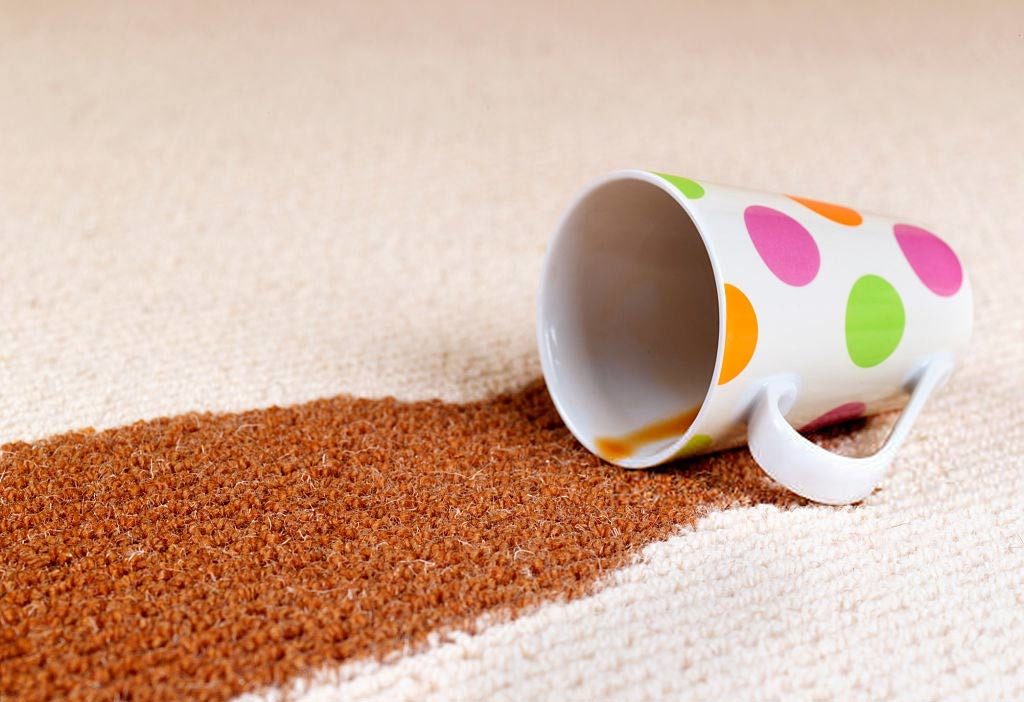
2. Cold Water Rinse
Once most of the excess liquid is removed, dampen a fresh cloth with cold water and gently blot the stain. Coldwater helps prevent the stain from setting further.
Deep Cleaning: Targeting Stubborn Stains
1. Vinegar Solution
If the stain persists, prepare a solution of equal parts white vinegar and warm water. Apply this mixture directly onto the stain using a spray bottle or a soaked cloth. Allow it to sit for 5-10 minutes to break down the tannins.
2. Gentle Scrubbing
Using a soft-bristled brush or an old toothbrush, gently scrub the stained area. Work from the outer edges towards the center to avoid spreading the stain. Continue until the stain starts to lift.
3. Detergent Treatment
Mix a small amount of mild detergent with water to create a soapy solution. Apply this to the stain, again using gentle circular motions with your brush. Let it sit for a few minutes before rinsing with cold water and blotting dry.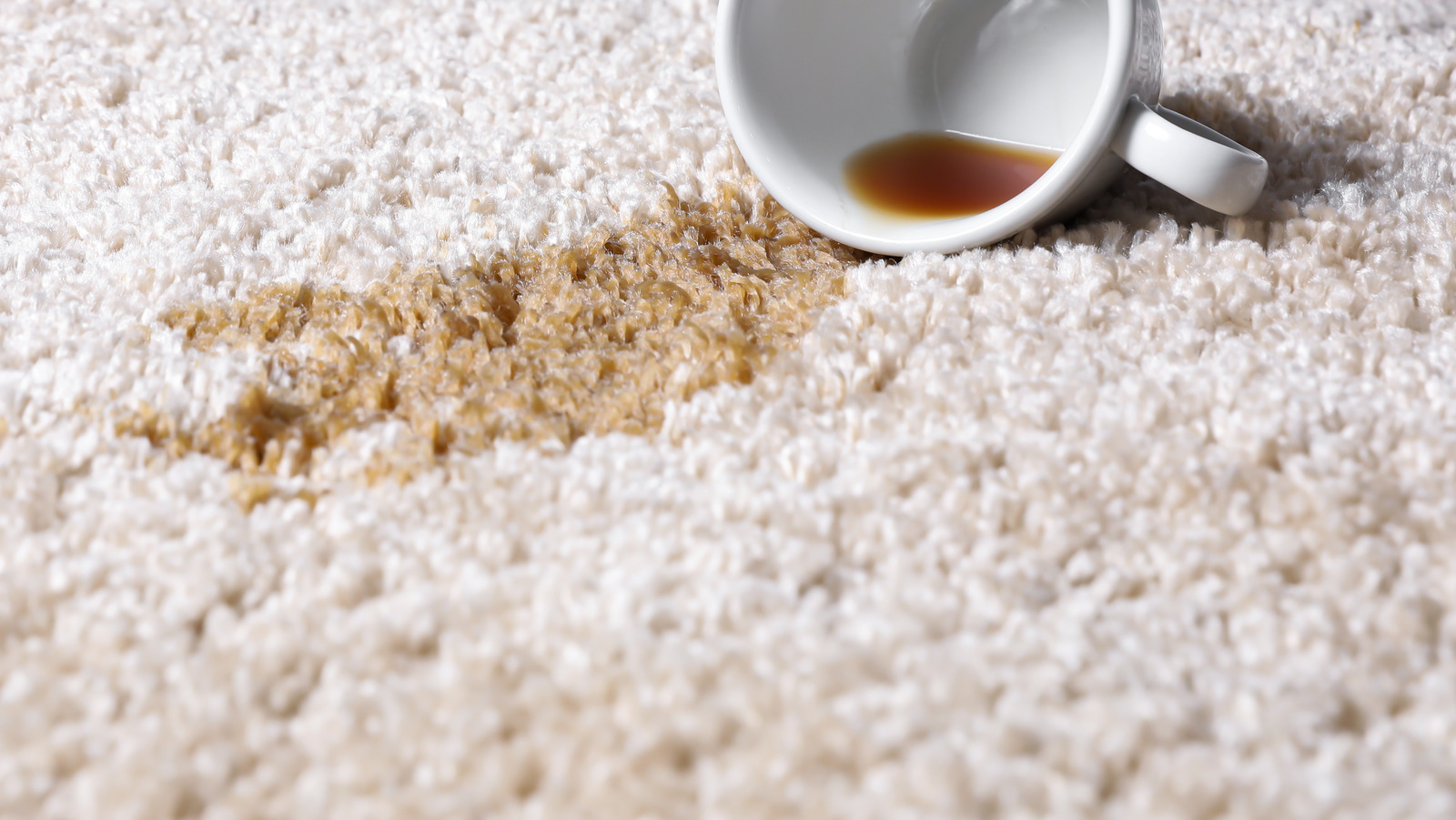
Final Touches: Neutralizing Odors & Preventing Residue
1. Baking Soda Magic
After cleaning, sprinkle a layer of baking soda over the treated area. Baking soda is an excellent natural deodorizer that can help neutralize any lingering odors. Let it sit for several hours or overnight, then vacuum thoroughly.
2. Air It Out
To speed up drying and ensure no mold growth, open windows or use a fan to circulate air around the cleaned carpet. Damp carpets are more susceptible to mold and bacteria growth, which can cause further damage.
Prevention Strategies: Minimizing Future Spills
1. Prompt Attention
Make it a habit to attend to spills immediately. The faster you act, the less likely the stain will become permanent.
2. Coasters & Mats
Use coasters under cups and place mats in high-risk areas to minimize direct contact between liquids and your carpet.
3. Regular Cleaning
Regular vacuuming and professional deep cleaning every 12-18 months can help maintain your carpet’s appearance and resilience against stains.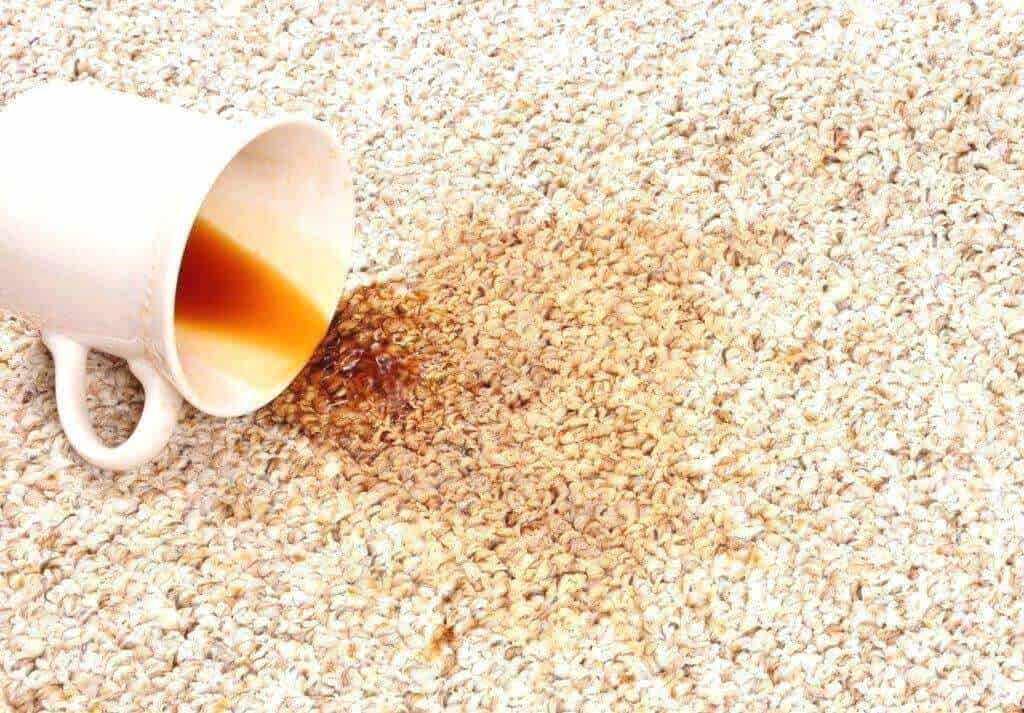
Enhancing Your Carpet Care Arsenal: Advanced Tips & Tools
While the fundamental steps outlined provide a solid foundation for tea stain removal, there are additional tricks and tools that can elevate your carpet care regimen.
- Enzyme Cleaners: For organic stains like tea, enzyme cleaners can be highly effective. These cleaners contain microorganisms that break down the stain-causing substances, including tannins. They are especially useful for older, set-in stains. Always follow the manufacturer’s instructions and test on an inconspicuous area first.
- Steam Cleaning: Investing in or renting a steam cleaner can significantly enhance your ability to deep clean carpets. Steam cleaning uses hot water extraction to penetrate carpet fibers and lift out embedded dirt and stains. It’s a powerful tool for overall carpet maintenance and can be used after spot cleaning to ensure thorough cleansing.
- Protective Treatments: Applying a carpet protector after cleaning can create a barrier against future stains. These products coat the fibers, making them resistant to absorbing liquids and stains. Be sure to choose a product compatible with your carpet type and follow application guidelines carefully.
- Stain-Specific Products: There are numerous commercial stain removers on the market specifically formulated to tackle tea and other tannin-based stains. While they can be efficient, always check their suitability for your carpet material and perform a patch test first.
- Ice for Gum or Sticky Residues: Though not directly related to tea stains, accidents happen where gum or sticky sweets end up on the carpet alongside a spilled drink. In such cases, freezing the residue with ice can make it brittle enough to chip off without leaving a sticky mess behind. Follow this with your regular stain removal process.
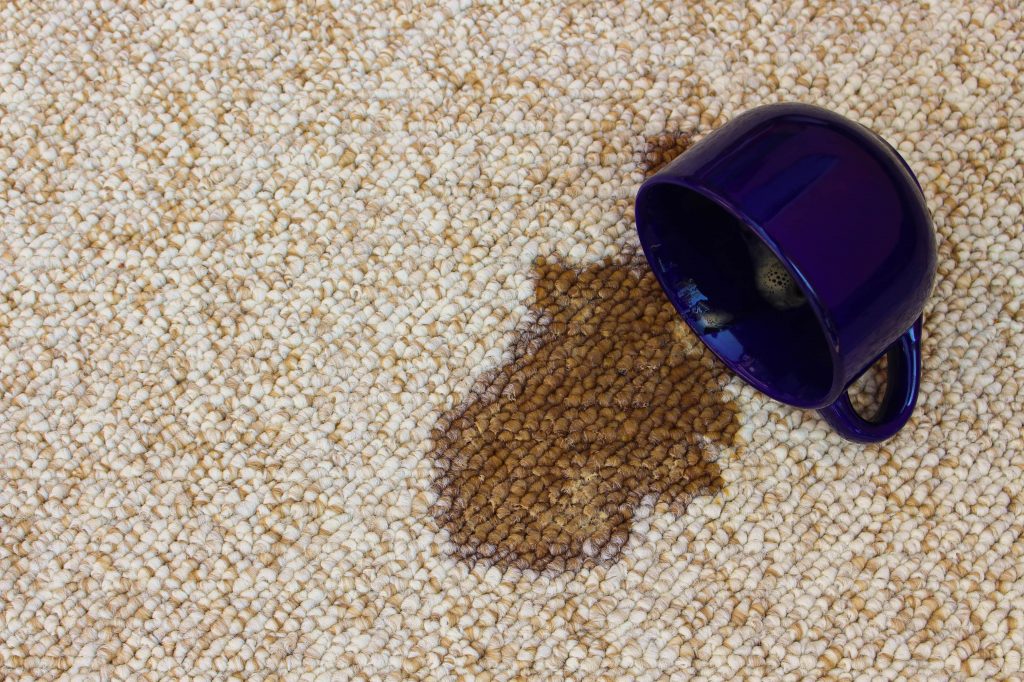
Maintaining a Stain-Free Environment:
In addition to the immediate response and cleaning strategies, fostering a routine of preventive maintenance can significantly reduce the occurrence of stains. Encourage a “no shoes” policy indoors to minimize the tracking in of dirt and grime that can act as abrasives, making carpets more susceptible to staining. Regularly rotating furniture and rugs can also help evenly distribute foot traffic wear and tear, extending the life of your carpet.
Mindful Consumption: Lastly, being mindful of where and how you consume beverages like tea can go a long way in preventing accidents. Using spill-proof mugs or keeping a coaster handy can be simple yet effective preventive measures.
Professional Help: When to Call In the Experts
Despite your best efforts, some stains might prove too stubborn or the carpet too delicate for DIY treatments. If the stain remains after following these steps or if you’re concerned about damaging your carpet, consult a professional carpet cleaning service. They have specialized equipment and expertise to handle tough stains safely and effectively.
In conclusion, removing tea stains from carpets requires a strategic approach combining prompt action, the right cleaning solutions, and a bit of elbow grease. By following these tips, you can successfully restore your carpet’s freshness and extend its lifespan, ensuring your home remains both cozy and beautiful. Remember, prevention is always easier than cure, so take precautions to minimize spills and enjoy your tea worry-free!
